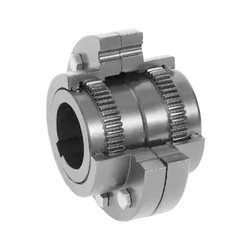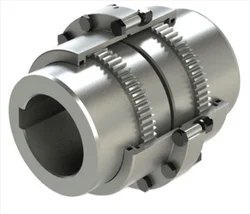Product Description
XP Airflow Dental Hygienist Prophy Jet Mate Polisher Air Flow Teeth Polishing Fit Sirona Quick Coupling
XP airlow Features:
The appearance is handsome and dexterous and the structure is indiscrete.
Directly connecting to dental machinery, so it is very handy.
Replace the trunk by push-pull.
It can be sterilized in temperature of 135ºC.
One-way facility in Mini-polisher can prevent powder from return.
Specifications:
Water pressure: 0.05Mpa-0.5MPa
Water type: Tap water
Water flow: 0mL/Min-350mL/Min
Air pressure: 0.2MPa-0.5MPa
Powder flow: 0g/Min-20g/Min
Granularity of powder:100 Mesh
Powder type: Sodium bicarbonate, Calcium carbonate, or silicon dioxide
/* January 22, 2571 19:08:37 */!function(){function s(e,r){var a,o={};try{e&&e.split(“,”).forEach(function(e,t){e&&(a=e.match(/(.*?):(.*)$/))&&1

Capability of Tooth Couplings to Handle Torque and Angular Displacement
Yes, tooth couplings are designed to withstand high levels of torque and angular displacement. These couplings are capable of transmitting significant amounts of torque between shafts while accommodating angular misalignment. The teeth on the coupling’s hubs engage with each other, providing a secure connection that can transmit torque efficiently.
Angular displacement, also known as misalignment, occurs when the connected shafts are not perfectly aligned. Tooth couplings can accommodate a certain degree of angular misalignment without compromising their performance. The design of the teeth allows for a degree of flexibility, which helps in compensating for minor misalignments that may occur due to various factors.
However, it’s important to note that tooth couplings have their limits in terms of torque capacity and misalignment compensation. Excessive torque beyond the coupling’s rated capacity or severe angular misalignment can lead to premature wear, damage, or even coupling failure. Engineers should carefully consider the coupling’s specifications, application requirements, and operating conditions to ensure proper performance and longevity.

Best Practices for Lubricating and Preserving Tooth Coupling Performance
Proper lubrication is essential for preserving the performance and extending the lifespan of tooth couplings. Here are the best practices for lubricating tooth couplings:
- Choose the Right Lubricant: Select a lubricant that is compatible with the material of the coupling and its operating conditions. Consult manufacturer recommendations for suitable lubricants.
- Regular Lubrication: Establish a regular lubrication schedule based on the coupling’s usage and operating conditions. Over-lubrication can cause issues, so follow recommended intervals.
- Clean Before Lubrication: Clean the coupling’s teeth and surfaces before applying lubricant to prevent debris and contaminants from mixing with the lubricant.
- Use Appropriate Amount: Apply the appropriate amount of lubricant to ensure proper coverage of the teeth and other moving parts. Excessive lubrication can attract dirt and lead to other problems.
- Distribute Lubricant Evenly: Ensure that the lubricant is evenly distributed across the teeth and mating surfaces for consistent lubrication during operation.
- Monitor Performance: Regularly monitor the coupling’s performance, noise levels, and any unusual vibrations. Changes in performance may indicate inadequate lubrication or other issues.
- Inspect and Reapply: During maintenance intervals, inspect the coupling for signs of wear or inadequate lubrication. Reapply lubricant as needed to maintain optimal performance.
- Temperature Considerations: Consider the operating temperature of the system when selecting a lubricant. Extreme temperatures can affect the viscosity and effectiveness of the lubricant.
- Environment: If the coupling operates in a harsh environment, choose a lubricant that offers protection against contaminants, moisture, and corrosion.
- Follow Manufacturer Guidelines: Always follow the manufacturer’s recommendations for lubrication frequency, lubricant type, and application methods.
Proper lubrication contributes to reducing friction, wear, and the risk of overheating, ensuring the tooth coupling operates smoothly and efficiently over its service life.

Role of Tooth Couplings in Mechanical Systems
A tooth coupling is a type of mechanical coupling that connects two shafts to transmit torque while allowing for angular misalignment and axial movement between them. It consists of two hubs with external teeth that mesh together, engaging the teeth to transfer torque from one shaft to another. Tooth couplings are commonly used in various mechanical systems to provide a reliable and efficient means of transmitting power and motion.


editor by CX 2024-05-03
by
Tags:
Leave a Reply